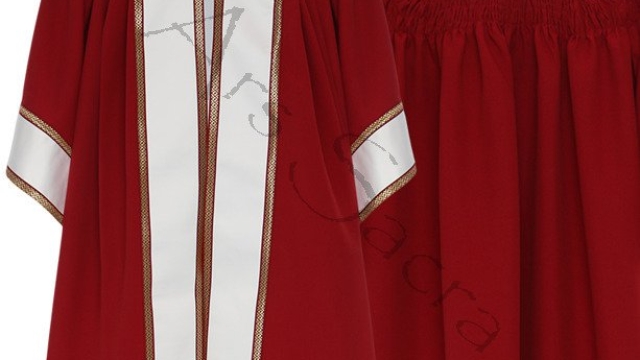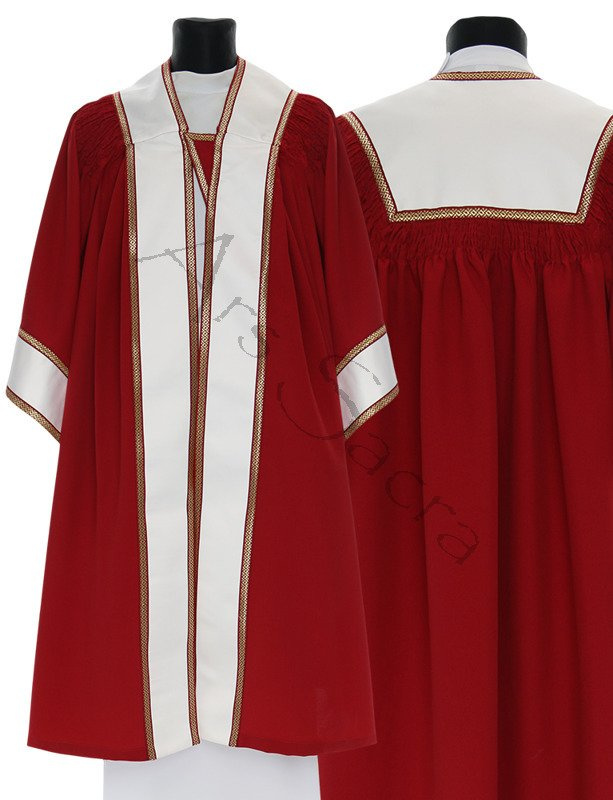
Harmonizing Elegance: The Timeless Allure of Choir Robes

Choir robes are not merely garments worn during choral performances; they embody a rich history of tradition and elegance. From their inception centuries ago to their continued presence in modern-day choirs, these timeless robes have become an integral part of the choral experience. With their flowing fabrics and distinct designs, choir robes not only unite singers visually but also serve as a symbol of unity, reverence, and artistic expression. Whether in a small church choir or a large concert hall, these robes harmonize elegance as they envelop performers and bring an air of grace to the stage. Join us as we dive into the captivating allure of choir robes, exploring their significance and the enduring appeal they hold for both singers and audiences alike.
A Rich History: Origins and Evolution of Choir Robes
Choir robes have a fascinating history that dates back centuries. These iconic garments, also known as choir vestments, have evolved significantly over time, but their underlying purpose has remained constant – to bring a sense of unity and elegance to choral performances.
In the early days of choral singing, choir members would wear ordinary clothing, without any distinct attire to set them apart. However, as religious and musical practices developed, the need for a more formal and uniform appearance became evident. This led to the emergence of choir robes as a way to visually enhance the overall performance and create a sense of reverence.
The origins of choir robes can be traced back to the medieval period when religious ceremonies held great importance in society. During this time, priests and other clergy members donned elaborate robes to signify their roles and statuses within the church. Choir members soon followed suit, adopting robes that were typically crafted from rich fabrics in vibrant colors.
Choir Robes For Adults
Over time, the design of choir robes evolved to include various elements that symbolized different aspects of the faith and the choral tradition. Gradually, elements such as hoods, capes, and stoles were incorporated into the robes, each carrying its own significance. These additions not only added a touch of elegance but also helped distinguish different roles within the choir, such as directors, choristers, and soloists.
In more recent years, choir robes have undergone further transformations to reflect the changing trends in fashion and design. While the traditional elements are still present, modern robes often feature streamlined cuts and contemporary fabrics that offer both comfort and sophistication. This blend of tradition and modernity has helped keep the allure of choir robes intact, ensuring their timeless appeal for generations to come.
Symbolic Significance: The Meaning Behind Choir Robe Colors
Colors play a vital role in the symbolic significance of choir robes, adding depth and visual interest to the choir’s performance. Each color holds its own special meaning, further enhancing the impact of the music and creating a vibrant atmosphere. Let’s explore the meanings behind some commonly used colors in choir robes.
White: Often associated with purity, innocence, and spiritual enlightenment, the color white holds great significance in the world of choral music. Representing the purity of the human soul, white choir robes evoke a sense of sacredness and reverence during performances. They symbolize the choir’s commitment to singing with a pure heart and uplift the spiritual experience for both the singers and the audience.
Black: Exuding a sense of elegance, sophistication, and formality, black choir robes are a classic choice for choral groups. Black represents the hidden depths of the human soul and signifies the choir’s dedication to their craft. It also adds a touch of visual uniformity and creates a powerful contrast when combined with other colors or accessories.
Red: Known for its vibrant and energetic nature, red is a color that demands attention. When used in choir robes, red symbolizes passion, enthusiasm, and strength. It captures the dynamic energy of the music and showcases the choir’s fervent dedication to their art. Red robes can also be seen as an embodiment of the emotional intensity and powerful vocal expressions often found in choral performances.
Blue: Representing tranquility, serenity, and harmony, blue choir robes bring a sense of calmness to the performance. Blue symbolizes the choir’s commitment to creating a harmonious musical experience and fosters a peaceful ambiance. It encourages a sense of unity amongst the singers and conveys the choir’s desire to touch the hearts of the listeners with their soothing melodies.
Purple: A color associated with royalty, luxury, and spirituality, purple choir robes add an air of elegance and grandeur to any performance. Often used during religious or ceremonial occasions, purple symbolizes the choir’s reverence for the divine and their elevated musical abilities. It commands the attention of the audience and underscores the importance of the music being performed.
By carefully selecting the colors of their choir robes, choral groups can enhance their performances and communicate a deeper message to the audience. Whether it’s conveying purity, elegance, passion, tranquility, or a sense of spirituality, the symbolic significance of choir robe colors adds an extra layer of meaning to the captivating world of choral music.
Embracing Tradition: Modern Uses and Styles of Choir Robes
Choir robes have a rich history and continue to be an essential part of choral performances today. Not only do these elegant garments enhance the visual appeal of a choir, but they also symbolize tradition and create a sense of unity among the singers.
In modern times, choir robes are not only limited to religious or traditional settings. They have also found their way into secular performances, such as academic ceremonies and community events. The versatility of choir robes allows them to adapt to different occasions, while still upholding their timeless allure.
One of the aspects that have helped choir robes evolve over time is the variety of styles available. From traditional cassock-style robes to more contemporary designs, choirs now have the freedom to choose a style that reflects their unique identity. Whether opting for long flowing robes or shorter, more fitted ones, the aesthetic appeal of choir robes remains intact, capturing the attention of both performers and audiences.
The use of different colors is another way choirs can personalize their robes. While black and white are often the preferred choices, many choirs now explore a range of colors that represent their individuality. Vibrant hues can add an extra layer of visual interest to performances, creating a captivating spectacle that complements the harmonious melodies produced by the singers.
In conclusion, choir robes hold a special place in the world of choral performances, blending tradition with modernity. They not only serve as a unifying element among the members of a choir but also contribute to the overall aesthetic appeal of their art. As choirs continue to evolve and adapt, embracing these timeless garments ensures that their performances remain visually captivating, emphasizing the elegance and allure of choir robes.

